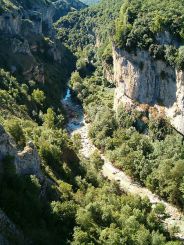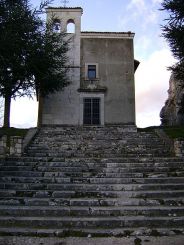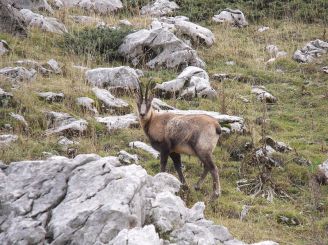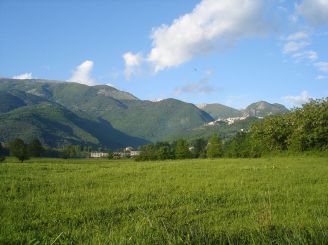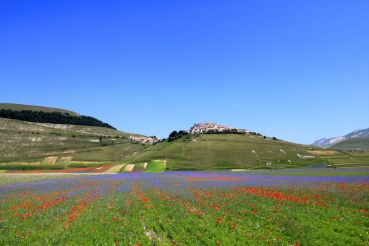Majella National Park, Abruzzo
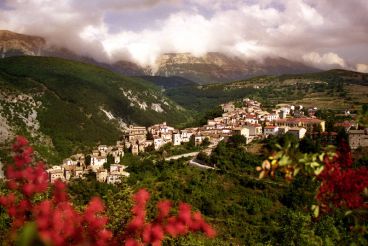
The Majella National Park (Parco Nazionale della Majella) is one of the best nature monuments in the world. It is located within the province of Chieti in Pescara and L'Aquila comune in Abruzzo, Italian region. The name of the park derives from the name of the Majella massif. The park is considered to be pretty small; main sights are centered around the Majella massif, Pizi and Porrara mountains to the east and mountains of Morrone to the west. Rich flora and fauna, as well as the diversity of beautiful natural surroundings, attract thousands of tourists. Valle dell'Orta canyon with its numerous grottos and caverns which were created by the flow of the Orta river running between Majella and Morrone ridges.
History of the Majella National Park
The Majella National Park’s history is just as interesting as its plentiful variety of flora and fauna. Around 800 thousand years ago the settlement of this area began in the Palaeolithic era, and 35 thousand years ago first Homo Sapiens appeared here.
Later during the Neolithic and the Chalcolithic eras agriculture, specifically sheep breeding, started actively developing. Many articles made of ceramic, bronze and iron were found here. Prospering Ancient Rome had a good impact on Abruzzo region where today’s park is located. Agriculture strengthened, cities, roads, and shrines were built.
The development of this area continued after the fall of Roman Empire. Several abbeys were created, and many monasteries were built, including cave ones. The road that ran through the Apennine ridge and connected North and South of Italy was of a great significance. It brought development of trade and various crafts, strengthening of sheep farming and lots of travelers such as Giovanni Boccaccio, who visited Sulmona town many times.
Noble families in villages strove for intellectual and cultural progress. Fancy houses were built, often with libraries and galleries which motivated artists such as architects, sculptors and painters to live and create art in this region. These include Tanzio da Varallo – Caravaggio’s follower, Cosimo Fanzago – Italian Baroque genius. Masterpieces of theirs and other artists can be found in Pescocostanzo, Manoppello, Guardiagrele, Tocco da Casauria and other cities.
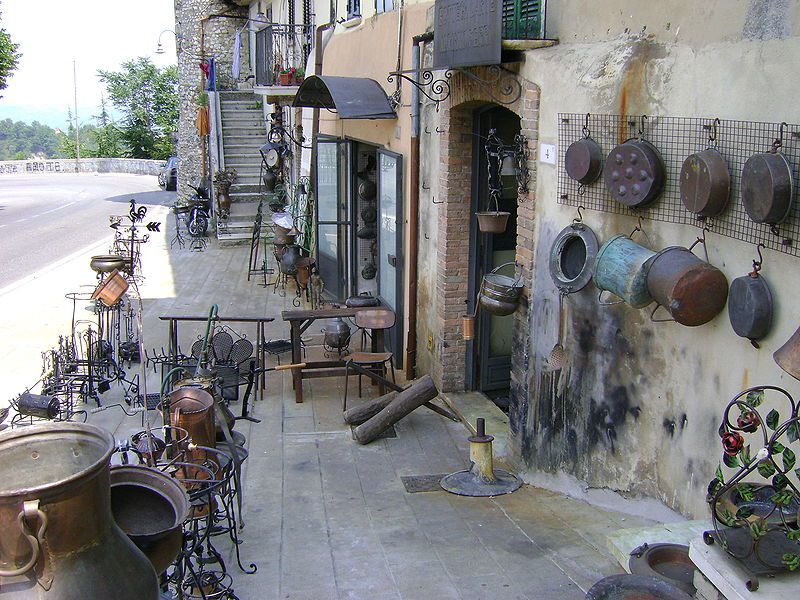
Local villages are also the birthplace of many lawyers, historians, and statesmen. After the consolidation of Italy, the region declined due to looting, decreased livestock level, unemployment and emigration. However things were looking up: a railway from Sulmona to Isernia was constructed, the interest in ecotourism and hillwalking increased.
Military activities and guerrilla warfare during World War II in 1943–1944 negatively affected this place. After the war emigration continued, although tourism in small villages continued developing as well. As a result in 1991, the Majella National Park was founded.
Information on the park
- Year of foundation – 1991.
- Park’s total area – 74,095 hectares.
- 61 mountains, the highest one is Monte Amaro (2793 meters).
- More than 130 bird species.
- More than 2100 plant species and subspecies.
- 116 diurnal and 700 nocturnal butterfly species.
- Three endangered animal species in Europe, 10 – in Italy, nine endangered subspecies in Europe. More than 300 plant species in need of protection.
- 45% of Italy’s fauna inhabits this place, and 17% of European plant species grow here.
- There is 500 km of tourist tropes paved around the park.
- The park’s area covers 39 communes.
Sights of the Majella National Park
There are many walkways, bike paths and bridle trails which trekking fans will find quite pleasant. Aside from that the park offers many interesting sights to see. They include botanical gardens, museums, wildlife areas as well as historical archaeological and architectural monuments. Now let’s look at the most interesting places in Majella where people observe animals and nature and protect them.
- Botanical garden «Michele Tenore». Founded in 1995 it is located 650 meters above sea level. More than 500 plant species, even endemic ones, are cultivated there. Many educational programs, courses, and seminars are carried out in the garden.
- Botanical garden «Daniela Brescia». Established in 2000 it is situated south of Sant'Eufemia a Maiella commune. The garden was created for mineral resource reproduction in the Central Apennines. More than 500 plant species grow here; local herbarium includes around 1000 plants that are part of region’s flora. The garden also owns a laboratory where herbals get dried and made into essential oils.
- Marsicano Bear Museum (Museo dell’Orso Marsicano). It is located in the town of Palena within the building where a monastery used to be. The Marsican brown bear is a symbol of Abruzzo, that’s why the main goal of the museum is to educate. All the information aims to help visitors learn about this animal species and its protection.
- The red deer wildlife enclosure. It was created in 2003 in order to protect red deer species in the wild. It is located in Ateleta commune at the height of 1500 meters above sea level. 16 deer which can be easily noticed live on this territory that covers 10 hectares. Visitors come here in September and October to hear their mating call.
- Lama dei Peligni wildlife enclosure. It was created in 1990 to increase the Pyrenean chamois species population sizes. It is situated near Lama dei Peligni Visitor Center. Ten chamois live within the area of 5 hectares; there is also a veterinary center set here.
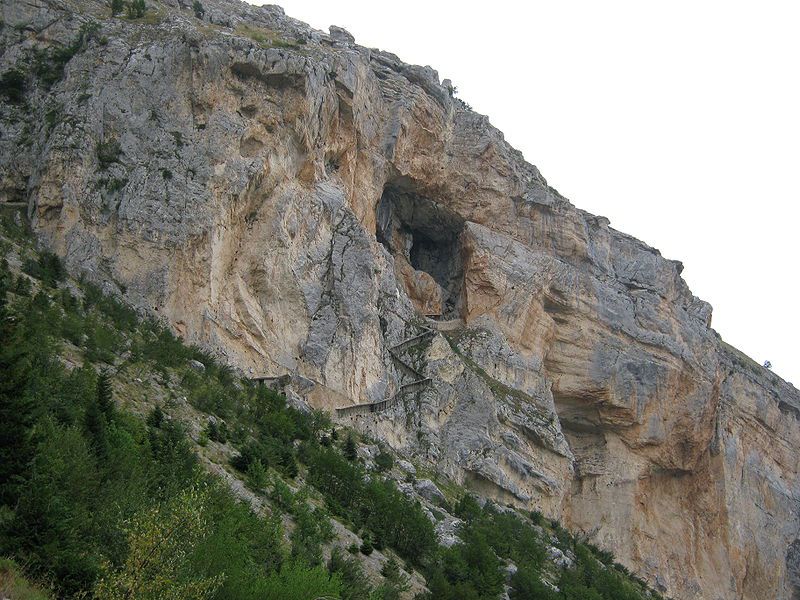
- The Eurasian otter wildlife enclosure. It is located close to Caramanico Terme information center. Here you can observe four representatives of species in their natural habitat. To get the opportunity to watch the otters take a guided tour.
Small towns and architectural landmarks of the Majella National Park are no less compelling:
- Valle dell'Orta Canyon. This place is considered to be the heart of the park. The Orfento River disembogues its waters into Orta and then into Pescara. Throughout years water had been eroding bedrocks so today we could enjoy real Italian canyon. The closest villages from which you can start your journey to the canyon.
- Shrine of Hercules Curinus in the city of Sulmona. This is a real sanctuary located at the foot of the Morrone mountain. It is decorated with stucco work and mosaic pavement. This monastery is situated in rocks and possesses frescos from 13th and 14th century. You’ll need Pacentro information center.
- Abbey of Saint Liberator. The complex is located at the foot of the Piano di Tarica mountain, near the town of Serramonacesca. There is also some indication that the shrine had existed since the year of 856. You can get information in Caramanico Terme and Fara San Martino Visitor Centers.
- Porrara mountain. Climbers will love tramping up there. The mountain is 2137 meters high. The hiking starts from towns such as Palena, Campo di Giove, and Pescocostanzo. The information about the mountain and hiking is provided by Pacentro information center, Marsicano Bear Museum in Palena and guesthouse Quarti near Palena station.
- Morrone mountain. This is the second highest mountain in Majella Park – 2061 meters. It offers fascinating views! The hiking begins in Sulmona or Passo San Leonardo. You will need to visit information centers: Caramanico Terme, Sant'Eufemia a Maiella or Pacentro.
- Saint Antonio Forest. It is located not far from Pescocostanzo, between the Valle Peligna and Val di Sangro. It is a beech forest that probably has been here since the Middle Ages. The girth of tree trunk goes up to 6 meters. Further information can be obtained at Pescocostanzo information center.
Information centers
You can find additional information, brochures, and leaflets at park’s informational centers. You can also buy route maps, rent bikes, and book guided tours there. Some of these centers include hostels. Here are available centers and addresses:
- Cansano. Casa Chioda – Via Dell’Emigrante, 15. Telephone: (+39) 347.1344793.
- Caramanico Terme. Via del Vivaio Caramanico Terme (PE). Telephone: (+39) 085.922343.
- Lama dei Peligni. Località Colle Madonna Lama dei Peligni (CH). Telephone: (+39) 0872.916010.
- Lettomanoppello. Largo Assunta, Lettomanoppello (PE). Telephone: 085.8423601, 348.9507707.
- Pacentro. Palazzo Tonno Piazza del Popolo, 7. Telephone: (+39) 0864.41304.
- Pescocostanzo. Vico delle Carceri, 4. Telephone: (+39) 333.4291109.
- Sulmona. Corso Ovidio, 165. Telephone: 333.4722342.
- Serramonacesca. P.zza del Popolo, Mediateca Comunale. Telephone: (+39) 389 59 51 367.
- Sant'Eufemia a Maiella. Via Roma, 99. Telephone: 349.6648985.
- San Valentino in Abruzzo Citeriore. Via Cupoli – Palazzo D. O. De Cambaceres San Valentino A. C. (Pescara). Telephone: 085.922343.
- Fara San Martino. P.zza Municipio Fara San Martino (CH). Telephone: (+39) 0872.980970.
How to get
The National Park is located in Central Italy, near the Adriatic coastline, 65 km south of the Pescara commune and 180 km east of Rome. Sulmona is considered to be the biggest city around where almost all the tourists come. The most convenient way to get here is by train. It departs from Rome every 2 hours; the ride will cost you 11 Euro. If you travel by car, then follow E80 road, get on S5 road in Pratola Peligna and after that – on SS17.



